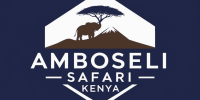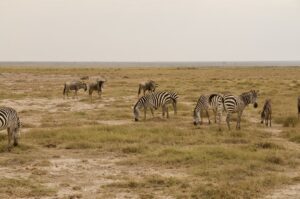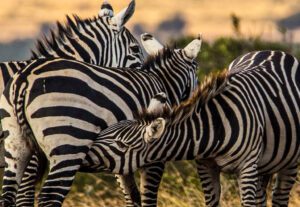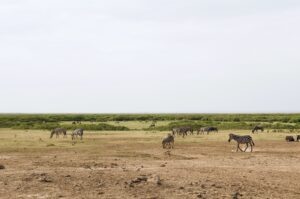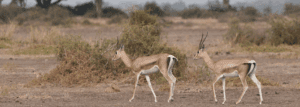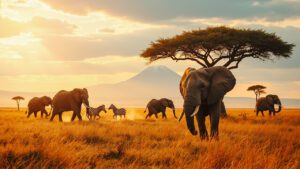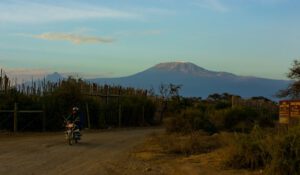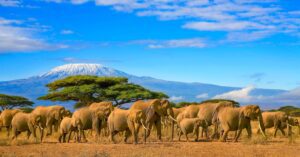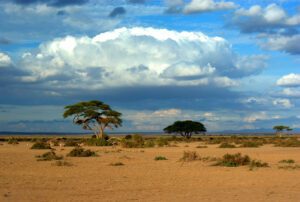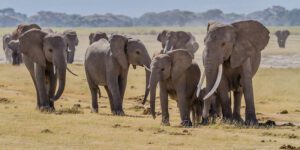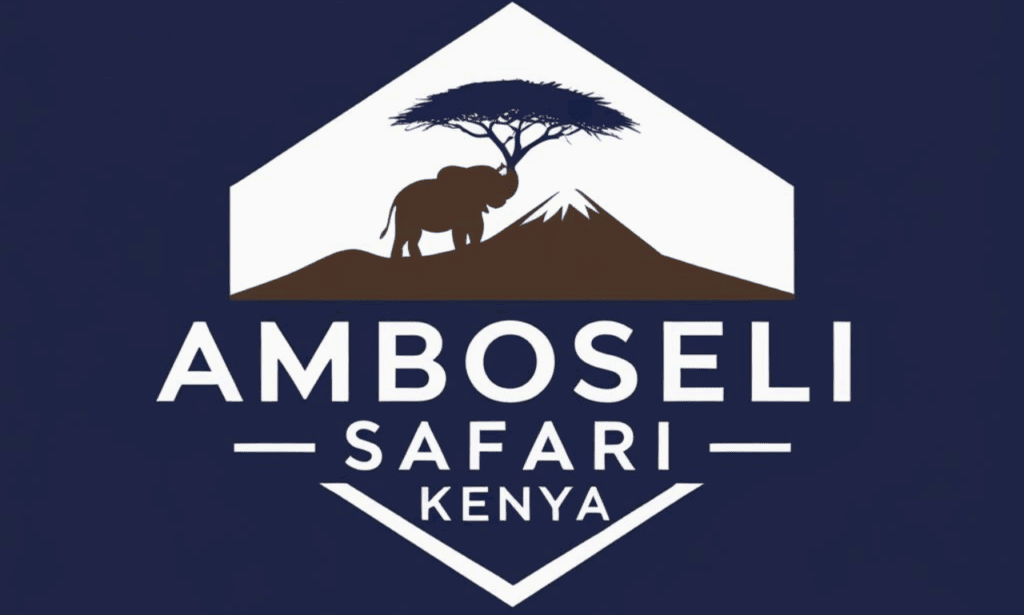Is self-driving allowed in Amboseli National Park?
Yes, self-driving is allowed in Amboseli National Park, a premier safari destination in Kenya, and it’s a popular choice for tourists who want the freedom to explore at their own pace! This park is famous for its stunning views of Mount Kilimanjaro and large elephant herds, making it a prime location for wildlife viewing. If you have access to a vehicle, you can drive yourself through the park’s vast open landscapes and enjoy all the sights and sounds of nature.
This option works well for visitors who have planned their trip independently and want flexibility. You can drive around the designated tracks and stop whenever you see something fascinating, like a family of African elephants or a lion lounging in the shade. It gives you the chance to explore on your schedule without feeling rushed by a guide or other group members, enhancing your overall African safari experience.
However, even though self-driving is allowed, you must follow all park rules and regulations. Kenyan authorities prioritize the safety of visitors and the protection of wildlife, so driving responsibly is essential. You also need to ensure that your vehicle is suitable for the terrain since some areas can be challenging due to mud, water, or rough paths.
Overall, self-driving in Amboseli is an exciting experience that allows you to feel like a true explorer, but you’ll need proper preparation to ensure a smooth and safe visit while enjoying the breathtaking landscapes.
What are the entry requirements for self-driving in Amboseli?
To self-drive in Amboseli National Park, part of the incredible wildlife experience in East Africa, you’ll need to meet several entry requirements to ensure you’re prepared and compliant with the park’s rules. Firstly, you’ll need to pay the park entrance fees, which can vary slightly depending on whether you’re a Kenyan citizen, a resident, or a foreign tourist. Typically, you can pay these fees at the park entrance gate when you arrive or in advance through authorized payment methods.
You’ll also need to have a valid driver’s license. If you’re a tourist from another country, your international driver’s license will be accepted as long as it’s valid. Make sure you bring this document with you for your drive safari!
For the vehicle, you’ll need to show proof of ownership or rental paperwork. If you’ve rented a car, ensure the paperwork indicates that you have permission to take the vehicle to the park. Additionally, check that the car is insured for travel in national parks and rough terrain, this is crucial in case of any accidents or damage during your safari experience.
Another key thing to have is a clear understanding of the park’s regulations. For example, rules about speed limits, not disturbing animals, and keeping to designated paths should be followed strictly. The park personnel may provide you with a brief list of rules when you arrive, and it’s essential to read it carefully to enhance your wildlife viewing experience.
Finally, be prepared with supplies like water, food, and any essentials you may need during your visit, as you’ll be driving through a remote area with limited facilities. With these requirements met, you’ll be ready to enjoy the breathtaking scenery of Amboseli and the majestic African elephants that roam its plains!
Are there specific vehicle restrictions for self-driving in the park?
Yes, there are some specific vehicle restrictions for self-driving in Amboseli National Park to ensure that both visitors and the wildlife stay safe. First and foremost, you’ll need a four-wheel-drive (4WD) vehicle. The terrain in Amboseli can be challenging, with dirt roads, uneven surfaces, and occasional mud (especially during the rainy seasons). A 4WD is essential to navigate these conditions without getting stuck or damaging the environment, especially when you drive East Africa’s stunning landscapes.
Sedans, small cars, or low-clearance vehicles are generally not allowed for self-driving in the park because they are not equipped to handle rough terrain. You’ll need a car that’s high enough off the ground to avoid scraping rocks or sinking into soft earth. If you try to enter with an unsuitable vehicle, park authorities might refuse entry for your safety and to avoid environmental damage, ensuring a safe and enjoyable safari experience.
Additionally, your vehicle should be in good mechanical condition. Imagine being stuck in the middle of the wilderness because of a breakdown, that’s something nobody wants! Before your trip, ensure your tires, brakes, lights, and engine are in good working order. Carry at least one spare tire, a jack, and basic repair tools, just in case you plan to embark on self-drive safaris.
Another important note: stick to marked roads and tracks. Off-roading is prohibited in Amboseli to prevent damage to the ecosystem or disturbing wildlife habitats. Even if you have a powerful 4WD, you’re not allowed to stray from designated routes, which is crucial for responsible wildlife viewing. Finally, avoid excessively loud vehicles or modified cars that may scare the animals or degrade the experience for other visitors.
In summary, as long as you’re using a 4WD vehicle that’s sturdy and well-maintained, you’ll have no problem exploring Amboseli National Park safely and enjoying the incredible wildlife it has to offer!
What are the park’s operating hours for self-drivers?
Amboseli National Park typically operates from 6:00 AM to 6:00 PM (East Africa Time), which aligns with the standard operating hours for most Kenyan national parks. These operating hours are strictly enforced to ensure the safety of both visitors and wildlife. The park’s gates are opened early in the morning to allow self-drive safaris and other visitors to enjoy game drives during the cooler hours of the day when animals are more active. By the evening, all visitors must exit to avoid risks associated with driving at night, such as losing your way, encountering nocturnal wildlife, or interfering with the park’s conservation efforts.
Keep in mind that driving within the park is prohibited after 6:00 PM, even if you are staying at a lodge or camp inside the park. It’s important to plan your safari experience accordingly to maximize your time. For instance, early mornings are perfect for spotting predators like lions or cheetahs on a hunt, whereas afternoons might provide opportunities to see herds of elephants near water points.
If you’re running late or unsure about closing times, park rangers and staff at the entrances or accommodations can clarify the schedule for you. Keep your watch or phone tuned to local time to avoid confusion, and beware that the gates won’t reopen again until the next morning.
Pro Tip:
Getting to the park gate early gives you a better chance to spot rare wildlife before they retreat during hotter midday hours. Stay mindful of the time throughout your trip!
Do I need a guide or tracker while self-driving in Amboseli?
No, you do not need a guide or tracker to self-drive in Amboseli National Park, but it can be a good idea depending on your experience with safaris and comfort level navigating unmarked or rough terrains. The park is very much self-drive friendly, and one of the joys of visiting Amboseli is the freedom to explore it at your own pace without needing to follow someone else’s schedule. In fact, many travelers enjoy the thrill of a self drive safari in East Africa, which allows them to experience the breathtaking landscapes and abundant wildlife at their leisure.
That said, there are certain benefits to hiring a guide, even if it’s optional. Guides or trackers are locals who know the park like the back of their hand. They can help you locate specific animals, such as Amboseli’s iconic elephants, lions, and flamingos, while sharing interesting facts about them. For example, they might know which water holes elephants visit most often, where predator activity has been seen recently, or what behavioral signs to look for when animals are nearby. If you’re unsure about spotting animals, a guide significantly increases your chances, especially in safari parks like the Serengeti National Park.
Additionally, guides can assist with safety and providing directions through areas where maps or navigation aren’t always reliable. For example, some paths or trails may appear confusing or inaccessible, especially after rainfall, and a tracker’s knowledge is highly valuable there. This is particularly true for those embarking on a drive safari across various stunning locations in East Africa.
If you don’t plan to hire a guide, ensure you research routes and the wildlife you’re looking for ahead of time. Bring a detailed map or GPS device and listen to any instructions given by rangers at the gate. It’s also important to respect wildlife territory, avoid off-road driving, and follow all park rules.
Pro Tip:
For first-time safari-goers, hiring a guide might make the experience more enriching and stress-free. However, for experienced and confident self-drivers, a guide isn’t absolutely necessary.
Are there specific routes or zones designated for self-driving?
Yes, Amboseli National Park has designated routes and zones for self-drive safaris. These are primarily dirt roads and mapped trails that wind through the park’s diverse habitats, such as the open savannahs, swampy marshes, and dry lake beds. The routes are well-marked to ensure visitors can navigate safely and avoid getting lost or accidentally damaging sensitive ecosystems while enjoying their African safari experience.
The most popular routes are those that pass through key areas of the park, such as Observation Hill (a high point offering panoramic views of the park), the swamps where hippos and elephants are often seen cooling off, and the dry areas near Lake Amboseli. Drivers are encouraged to stick to these established trails to minimize environmental harm and reduce disturbance to animals. Off-road driving is strictly prohibited to protect the park’s flora and fauna, especially considering the park’s proximity to the Tanzanian border.
There are no zones exclusively for guided tours, meaning self-drivers can access the same areas as safari vehicles from lodges or tour companies. However, rangers monitor all visitors to ensure compliance with park regulations. You’ll be given a map at the entrance, or you can purchase/download more detailed ones to help you navigate, enhancing your overall safari experience.
One cool feature? Some of the paths take you close to wildlife hotspots. For example, in the plains near the swamp routes, you’ll likely see elephants in large herds, while the areas around the dry Lake Amboseli allow you to spot migratory birds and even predators like hyenas! Explore the loops slowly to ensure you don’t miss anything, as this region is known for its incredible wildlife encounters.
Pro Tip:
Stick to designated viewing points for safety, as animals may become unpredictable if you stray too close to their habitats. Always prioritize their comfort and avoid rushing for a photo.
What safety precautions should I take while self-driving in the park?
When self-driving in Amboseli National Park, safety should be your top priority because the environment is home to wild animals, unpredictable terrain, and unique challenges. Here are the key safety precautions you should take:
- Stay Inside Your Vehicle: Always remain inside your vehicle unless you are in designated areas where stepping out is permitted. The animals in the park, such as elephants, lions, and buffalos, can be unpredictable and dangerous. Even if they seem calm, they might react aggressively if they feel threatened, so it’s best to admire them from the safety of your car.
- Keep a Safe Distance from Wildlife: Avoid driving too close to animals, especially large ones like elephants. For example, an elephant may feel threatened if you approach too closely, which could lead it to charge your vehicle. As a general rule, keep at least 20–30 meters (65–100 feet) of distance from wildlife.
- Drive Slowly and Avoid Sudden Movements: The park’s speed limit is around 40 km/h (25 mph), but you should often drive even slower, especially when animals are near. Driving slowly ensures you don’t startle the animals or accidentally hit smaller ones that may suddenly cross roads.
- Be Mindful of Weather Conditions: Amboseli is known for its dusty tracks and occasional muddy zones during rains. Be prepared and check the weather before heading out. Carry equipment like a shovel to dig out your vehicle if you get stuck.
- Carry Essential Supplies: Bring plenty of water, snacks, and a first-aid kit in case of emergencies. Cell service can be limited, so having a two-way radio or satellite phone is also a good idea.
- Don’t Feed the Animals: Feeding animals can make them dependent on human food, disrupt their natural behaviors, or make them more aggressive toward vehicles expecting food.
- Stay Alert at Waterholes: Many animals gather at waterholes, and predators often lurk nearby. Observing from a safe distance is essential to avoid alarming or disturbing the wildlife.
- Plan for Daylight Hours: Self-driving should only be done during daylight. It’s harder to see animals at night, and some predators like lions become more active after dark.
By following these precautions, you’ll have an enjoyable, safe drive while minimizing your impact on the animals and their habitat.
Are there any restrictions on interacting with wildlife while self-driving?
Yes, there are strict restrictions on interacting with wildlife while self-driving in Amboseli National Park, and these are in place to protect both the animals and visitors. Here’s what you need to know:
- Do Not Feed the Animals: Feeding wildlife is completely prohibited. It might feel tempting to offer food to animals like monkeys or birds, but this can harm them. For instance, animals may start relying on human-provided food instead of foraging naturally. Feeding larger animals, like elephants or hyenas, can make them dangerously bold and more likely to approach vehicles aggressively.
- Do Not Touch or Approach Animals: You are not allowed to touch, approach, or try to interact with any animals. For example, trying to pet a cheetah or approach a baby elephant could lead to dangerous situations where the parent animal sees you as a threat. Always admire animals from your vehicle or at designated observation points.
- Avoid Noise Pollution: Loud noises, such as honking your horn or playing loud music, can disturb the natural behavior of wildlife and stress them out. Keep the noise levels to a minimum to avoid scaring animals away or provoking aggressive behavior.
- No Littering: Littering harms the environment and poses risks to animals, who may ingest plastic or other harmful materials. Always dispose of your waste in designated bins or carry it out of the park with you.
- Do Not Block Animal Paths: If you notice animals like elephants or zebras crossing the road, stay back and give them ample space. Blocking their paths can stress them out and lead to unnecessary confrontation. Animals crossing the road always have the right of way.
- No Harassment or Chasing: Never deliberately follow, chase, or harass animals. This includes revving your engine to scare them or trying to drive closer for photos. For example, getting too close to a lion napping under a tree could stress it out and provoke an attack.
These rules ensure that you respect the wildlife and their environment while staying safe. If you break these restrictions, you could face fines, ejection from the park, or more severe penalties.
What is the condition of the roads and terrain in Amboseli for self-driving?
The road conditions and terrain in Amboseli National Park for self-driving can vary widely depending on the weather, making it essential to prepare accordingly. Below is a breakdown of what to expect:
- Dry Season (June to October): During the dry months, the roads are typically dry, dusty, and bumpy. Many of the roads in the park are unpaved dirt tracks, which can get rough and uneven. Vehicles often have to navigate through thick dust clouds, especially when following behind another car. A 4×4 vehicle is recommended to handle these conditions comfortably.
- Wet Season (November to May): In the rainy season, parts of the park’s roads can become very muddy and even impassable. Amboseli is known for seasonal variations in its terrain, and many low-lying areas can flood, leading to deep puddles or soft, slippery mud. For example, the roads around the marsh areas or near the seasonal lakes might become extremely difficult to navigate without a sturdy off-road vehicle. Again, a 4×4 is critical for navigating these conditions.
- Features of the Terrain: Amboseli’s landscape is mostly flat and open, with stunning views of Mount Kilimanjaro in the background. However, certain areas like swamps, open plains, and forested spots may present different challenges. During the dry season, cracked soils may shake your vehicle, while roads around swamps might remain muddy year-round.
- Maintenance and Markings: The roads are safari-grade rather than well-maintained highways. While signage exists to mark key attractions like Observation Hill or the swampy areas, it’s essential to have a map or navigation device because some tracks are not clearly marked.
- Examples of Challenges: For instance, if you’re driving near the waterholes, you might encounter vehicles stuck in mud during a surprise downpour. Similarly, dust storms can temporarily limit visibility.
For a smoother experience, use a high-clearance 4×4 vehicle with good tires, and carry essentials like a tow rope, tire repair kit, and extra fuel if possible. Preparing for variable conditions will help ensure you enjoy your self-driving adventure without getting stranded.
Are there maps or navigation aids available for self-drivers?
Yes, maps and navigation aids are available for those who want to self-drive in Amboseli National Park, a popular safari destination. It is important to be prepared and understand what resources are at your disposal. Most visitors receive a basic paper map of the park at the entrance gate upon paying the park fees. These maps typically outline the main roads, visitor routes, landmarks, and viewing points inside the park. While these maps are relatively straightforward, they may not have high levels of detail, so don’t expect GPS-style precision when you drive East Africa.
If you’re using modern technology, GPS devices or mobile navigation apps can also be helpful while driving in Amboseli. However, be cautious, network reception in the park can be sparse or nonexistent. It’s a good idea to download offline maps before entering, using apps like Google Maps (by downloading the park area in advance) or specialized wildlife safari tools. Apps such as Tracks4Africa or Maps.Me are popular with safari-goers because they offer detailed offline maps for remote parks in Africa, including the stunning Serengeti National Park.
Another option is to ask for better maps or specific advice from the park’s entrance staff, your lodge, or other drivers. These can often provide recommendations for spotting wildlife or navigating to key spots like Observation Hill, watering holes, or camp sites. Engaging with local Maasai communities can also enhance your safari experience, offering insights into the rich wildlife and culture.
Pro Tip: Always combine maps with good observation skills. Look out for road markers, park signs, or any path deviations, you don’t want to get lost, especially in an area with wild animals! Having a backup plan, like a physical map stored in the car, is a smart move to stay safe while exploring Amboseli independently.
What are the costs associated with self-driving in Amboseli National Park?
The costs for self-driving in Amboseli National Park depend on several factors, such as entry fees, vehicle fees, and any potential extra costs for planning your trip.
- Entry Fee: Amboseli charges per person for park entry. For non-residents (international tourists), the entry fee is generally higher, often around $60-70 per adult per day (check the Kenya Wildlife Service website for the most updated rates). Children generally have reduced rates. For East African residents or citizens, the fees are much lower, making it more affordable for locals.
- Vehicle Fee: If you’re driving your own car into the park, there’s usually a fee for the vehicle, charged based on type and size. Small private vehicles like sedans or 4x4s are typically between $5-10 per day, while larger vehicles and tour vans may incur higher charges. Ensure your vehicle is in good condition for the park’s terrain.
- Additional Fees: Consider other costs like fuel (it’s smart to fuel up before entering the park, as there are no fuel stations inside), guide or ranger hire if needed, or overnight accommodation if you plan to stay for more than a day. Self-catering inside the park may help lower costs, but staying at a safari lodge or camp can increase expenses.
- Miscellaneous Costs: Equipment like navigation tools, park maps, or even renting a safari-friendly 4×4 vehicle should also be budgeted if you don’t have a capable car.
Self-driving is often cheaper than booking an organized tour, but planning ahead is key for managing costs without compromising the quality of your experience.
Are there facilities like rest areas, fuel stations, or accommodations available for self-drivers in the park?
Yes, Amboseli National Park has several facilities for self-drivers, but you’ll need to plan smartly because these are limited compared to urban areas.
- Rest Areas: The park has designated picnic sites where you can stop, stretch your legs, and have a meal. These rest areas are usually safe from wildlife and designed for tourists to take short breaks. For example, there’s a famous site at Observation Hill, where you can enjoy panoramic views of the park and Mount Kilimanjaro in the distance. You might also find public restrooms nearby in some places, but don’t expect full-service facilities.
- Fuel Stations: This is where you need to be extra cautious. Amboseli National Park itself does NOT have fuel stations inside it. It’s highly recommended to fill your tank in nearby towns like Namanga or Emali before entering the park. Running out of fuel in the park could leave you stranded in a remote area with restricted help options, so come fully prepared.
- Accommodations: Accommodations are available both inside and near Amboseli. Inside the park, there are luxury lodges, tented camps, and self-catering bandas offering facilities for overnight stays, such as Amboseli Serena Safari Lodge or Kibo Safari Camp. Additionally, lodges and camps outside the park are often more affordable and convenient for those who want to explore the area without staying inside the park boundaries. Camping is also an option for self-drivers, just ensure you book in advance and confirm safety details with the park.
Keep in mind that Amboseli is a wilderness area, so resources are basic compared to cities. Always carry essentials like drinking water, snacks, basic medical supplies, and tools for your car in case of any emergencies while navigating the park.
Final Thoughts
So, can you self-drive in Amboseli National Park? Absolutely! This incredible safari destination allows you to explore its stunning landscapes and wildlife on your own. We’ve covered the “what” (yes, you can self-drive), the “how” (by preparing for an adventurous but safe journey), and the “why” (for the freedom to discover Amboseli at your own pace). It’s an amazing way to connect with nature’s beauty and marvel at the abundant wildlife, especially elephants against the backdrop of majestic Mount Kilimanjaro. Ready for an adventure? Start planning your drive safari trip, and let Amboseli inspire your inner explorer!
